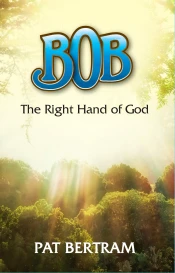 Dialect and regional accents are especially tricky to write. It used to be that writers tried to show dialect and accent through the laborious use of phonetic spellings and a blizzard of apostrophes. Today, though, we readers don’t like having to decipher the author’s personal code. Nor do we writers need to take the time to create the code. It’s better to use colloquialisms and broken language to show regional differences. For example, “I done died and gone to heaven.” Not an apostrophe or phonetic spelling in sight, though you know immediately the speaker is not a high-toned college professor from Boston.
Dialect and regional accents are especially tricky to write. It used to be that writers tried to show dialect and accent through the laborious use of phonetic spellings and a blizzard of apostrophes. Today, though, we readers don’t like having to decipher the author’s personal code. Nor do we writers need to take the time to create the code. It’s better to use colloquialisms and broken language to show regional differences. For example, “I done died and gone to heaven.” Not an apostrophe or phonetic spelling in sight, though you know immediately the speaker is not a high-toned college professor from Boston.
If your character has a foreign accent, you don’t have to bludgeon a reader with it. All that is necessary to portray an accent is to say the character speaks with an accent. If you wish, you can use phrasing to remind the reader of the accent, such as, “We will go to the store. No?” or “I’ll put a couple of shrimp on the barbie, mate.”
This snippet from Daughter Am I shows Crunchy’s difficulty with English:
“Mary’s trying to find out about her grandparents,” Kid Rags said. “His name was James Angus Stuart.”
Crunchy shook his head. “Don’t know no James Agnes Stuart.”
“What about Regina DeBrizzi Stuart?” Mary asked.
“Don’t know her neither.”
Later in the story is this snippet.
[Mary says]“Why did you lie to me? Everyone’s lied about my grandparents my whole life, and I’m sick of it.”
Crunchy edged away from her, and for the first time his eyes didn’t sparkle when he looked at her. “I didn’t lie. I don’t know no James Agnes Stuart. You never asked me about Jimmy Boots.”
“I didn’t lie either.” Kid Rags sounded as unfriendly as when Mary first met him. “I just didn’t tell you the whole truth. We didn’t come from nice suburban neighborhoods where things are relatively safe. For our own protection, we had to learn not to talk about ourselves or anyone else.”
Some writers still insist on writing accents phonetically, and in this new world of publishing where everyone is making up their own rules, you can do it to. Just be aware that it is not ideal and will cost you readers because of the difficulty of deciphering your particular code.









June 24, 2012 at 2:42 pm
Pat, I agree with you about dialogue with accents. All of my books are either big city / inner city where I use black and hispanic characters. I beleive that the dialect should be used to give the character depth and realism. If used correctly, it puts the character in his world and you take your reader there. A foreign accent that is mentioned in passing leaves that character hollow.
I have been dinged by critics for this but I ignore what they say and go ahead anyway.On the Fliesk / Kinkaid (sp) comprehension tables the standard for fiction writing for adults should be written at the 8th to 10th grade comprhension level…..I think ebonics, chinglish, spanglish, redneck…etc are appropriate if targeted and kept simple at this level.
June 24, 2012 at 2:49 pm
Mike, Hey! I am honored that you stopped by my blog!
As long as the language is simple and easily comprehended, that works. What is difficult to read are words spelled phonetically or sentences sprinkled with aptostrophes. If you have to stop reading to decode the author’s writing, you lose the flow of the story.